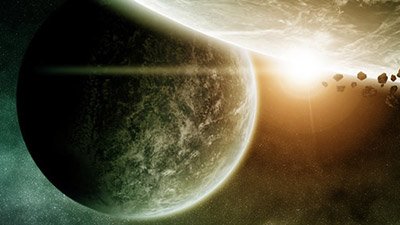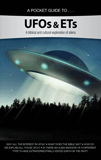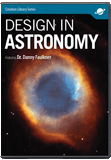
Is Near-Earth-Size Kepler-452b Suitable for Life?
NASA recently announced the discovery of the latest Earth-like extrasolar planet, Kepler-452b.1 Since the discovery of the first extrasolar planet a little more than two decades ago, the pace of extrasolar planet detection has increased considerably. Much of the increase was fueled by the Kepler mission. Kepler is a spacecraft that searches for planets orbiting other stars by measuring the dimming that the planets cause as they pass between us and their parent stars. Astronomers call such an event a transit.
How much a transiting planet dims its star reveals the size (diameter) of the planet. The timing of successive transits reveals the orbital period of the planet. If we can estimate the mass of the star, we can use the orbital period to determine the size of the planet’s orbit. This latter bit of information is very important, for it determines whether an extrasolar planet orbits within its star’s habitable zone. The habitable zone is the narrow region around a star in which liquid water might exist on an Earth-like planet.2 Obviously, if a planet is too close or too far from its star, liquid water is not possible.
However, to be suitable for life, a planet must have favorable factors other than just the proper distance from its star. After all, the Earth’s moon is the right distance from the sun, but it cannot support life. This is because the moon lacks enough mass to have sufficient gravity to maintain an atmosphere. Without proper atmospheric pressure, liquid water is not possible on a planet’s surface, and we think that liquid water is essential for life. Furthermore, an atmosphere protects a planetary surface from most of the harmful ultraviolet radiation produced by the star the planet orbits. Without this protection, the radiation would destroy any life.
But merely having an atmosphere is not sufficient either—the planet must have the right kind of atmosphere. Polyatomic gases (gases whose molecules contain three or more atoms) are deadly, because they trap infrared radiation, making the surface of a planet far too high for liquid water. Scientists have figured out that probably the best suitable atmosphere for life is one composed primarily of diatomic nitrogen (like the Earth’s atmosphere, with 78% N2). Just as planets with too little mass cannot keep an atmosphere, planets with too much mass probably keep the wrong type of atmosphere. The ability to probe directly the atmospheres of extrasolar planets is still off in the future, but scientists generally think that planets close to the Earth’s mass are the ones likely to possess Earth-like atmospheres.
This is the sort of reasoning that scientists have applied to the recently discovered Kepler-452b. This planet is about 60% larger than the Earth. Assuming a density close to that of Earth, Kepler-452b would have a mass about five times more than the Earth. However, there is uncertainty about the size, and, given the fact that we know nothing about the composition (and hence density) of Kepler-452b, these figures are at best crude estimates. The density could be very low, close to that of the Jovian planets. If so, then there is doubt that the planet even has a solid surface, and the atmosphere would almost certainly contain far too much polyatomic gases to be suitable for life. Therefore, there is nothing about the planet itself that strongly indicates that it could harbor life.
Rather, what attracts attention to Kepler-452b is that its 385-day orbit is well placed in the habitable zone of its star, Kepler-452. Kepler-452 has the same temperature as the sun, but astronomers think that it is slightly larger and brighter than the sun. If true, then stellar evolution theory would make Kepler-452 about 6 billion years old, as compared to the supposed 4.6-billion-year age of the sun. This raises questions as to whether the planet Kepler-452b has already suffered a runaway greenhouse due to increased stellar luminosity with age.
We here at Answers in Genesis believe that life is unique to Earth, so is the discovery of Kepler-452b a problem for us? No. The agenda behind the search for extrasolar planets is belief in the naturalistic origin of life. Evolutionary scientists seem to think that finding planets where life might exist somehow would prove that life arises spontaneously, apart from God. However, identification of an extrasolar planet where conditions for life may be good is a far cry from actually determining that the conditions on said planet actually are good for sustaining life. Furthermore, it is a huge leap to claim that life actually exists on any of the extrasolar planets yet discovered. There have been several claims of Earth-like planets already, such as for Kepler-186f3 and Kepler-22b.4 Discoveries of these planets always have been accompanied by a liberal amount of optimism fueled by a commitment to the naturalistic origin of life. However, the facts often do not square with the optimistic reports. For example, the discovery of Gliese 581d, the first extrasolar planet claimed as being suitable for life eventually was retracted, because it did not even exist!5 We expect that the hype over Kepler-452b soon will dissipate as facts eventually will argue against it as a cradle for life. With nearly 2,000 extrasolar planets now known, there is no evidence that life exists elsewhere or that life could even exist elsewhere.
Footnotes
- Luigi Lugmayr, “Kepler-452b Details Unveiled,” I4U News, July 23, 2015, http://www.i4u.com/2015/07/93538/kepler-452b-details-unveiled.
- Danny Faulkner, “Just Right for Life,” Answers, January–March 2014, https://answersingenesis.org/astronomy/extrasolar-planets/just-right-for-life/.
- Elizabeth Mitchell, “Quest for Goldilocks Planet Scores a Hit with Kepler-186f,” Answers in Genesis, May 3, 2014, https://answersingenesis.org/astronomy/extrasolar-planets/quest-goldilocks-planet-scores-hit-kepler-186f/.
- Elizabeth Mitchell, “NASA Discovers Planet Within a Habitable Zone,” Answers in Genesis, December 17, 2011, https://answersingenesis.org/astronomy/extrasolar-planets/nasa-discovers-planet-within-habitable-zone/.
- Danny Faulkner, “Gliese 581d (2007–2014): RIP,” Answers in Genesis, October 13, 2014, https://answersingenesis.org/astronomy/extrasolar-planets/gliese-581d/.
Recommended Resources

Answers in Genesis is an apologetics ministry, dedicated to helping Christians defend their faith and proclaim the good news of Jesus Christ.
- Customer Service 800.778.3390
- © 2024 Answers in Genesis







